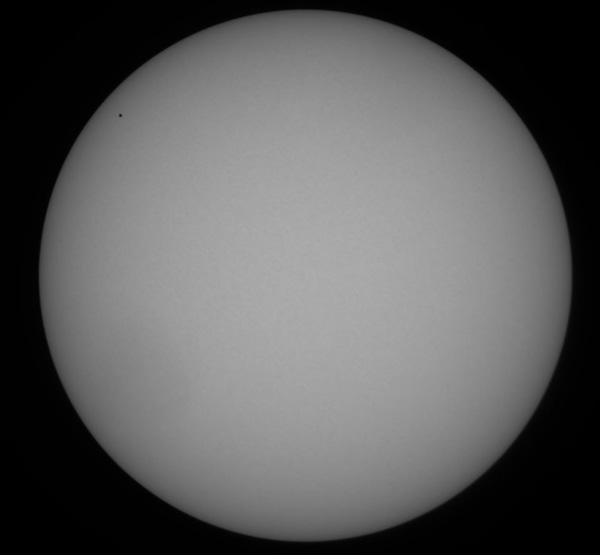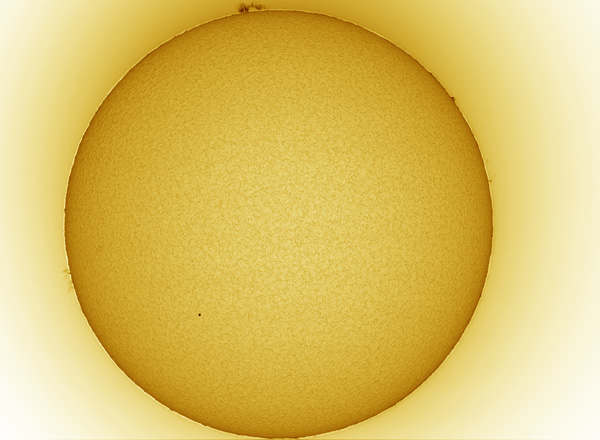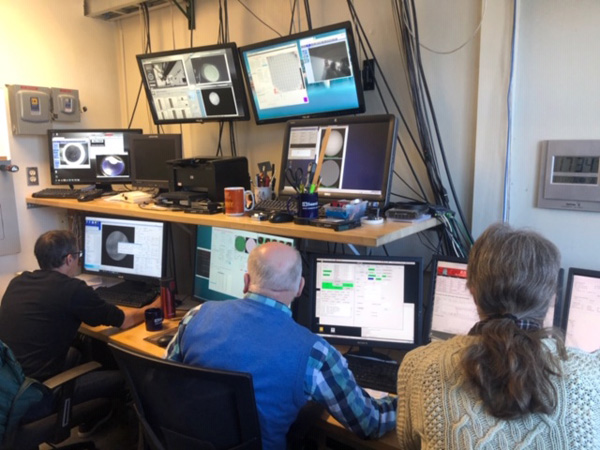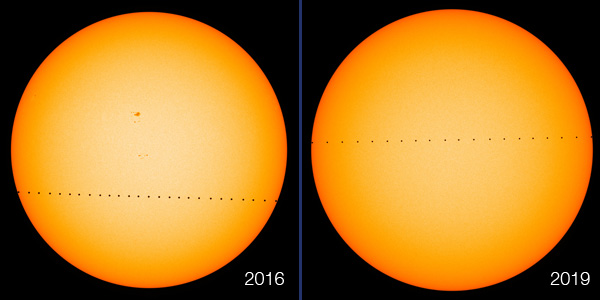Capturing the Transit of Mercury – Sky & Telescope
Though clouds blocked the sky for many yesterday, those with a clear view had the chance to see tiny Mercury cross the face of the Sun. Enjoy the results — it won’t happen again until 2032.
On Monday, November 11th, Mercury crossed the Sun for the last time until 2032. The transit took 5½ hours, so it wasn’t exactly a dashing sight. Yet the view — for those who had one (the offices of S&T were sadly clouded out) — was nevertheless captivating. The sky so often appears two-dimensional, but Mercury’s transit is one of the few views that reveals all three dimensions of our solar system.
Mercury is tiny with respect to the Sun: As it crossed, it only covered 0.001% of the Sun’s surface. So anyone watching the transit yesterday was looking through a telescope. Of course, this requires filtering to protect eyes from the Sun’s magnified light, but it also offers the option to use several different filters to reveal different aspects of the Sun.
This video by Stephen Ramsden, of the Charlie Bates Solar Astronomy Project, shows the Sun at various levels of magnifications through hydrogen-alpha and calcium-K filters, as well as a white-light view:
Despite the weather system that clouded out many areas, the Citizen ToM project was able to collected some good data from at least 10 sites, reports Zack Stockbridge. Ultimately, this collection of citizen scientists aims to use multiple points of view of the transit to re-calculate the distance from Earth to the Sun. Measuring the astronomical unit was essential to astronomers a couple centuries ago as they attempted to understand the full span of our solar system.

Mercury can be seen as the small black dot in the upper left of this white-light image of the Sun. The image was taken as part of Citizen ToM.
Zack Stockbridge

A second image, taken using a Lunt Solar Systems hydrogen-alpha telescope, was not part of the Citizen ToM project proper, but shows a more dramatic view of the Sun.
Zack Stockbridge
Jay Pasachoff (Williams College) led a team observing the transit with the 1.6-meter Goode Solar Telescope at the Big Bear Solar Observatory in California. The team also employed a second site at Embry-Riddle Aeronautical University for another view of the transit, as part of an international collaboration to precisely measure the astronomical unit.

The staff at the Big Bear Solar Observatory monitor the 1.6-meter Goode Solar Telescope as it watches Mercury cross the Sun.
Jay Pasachoff
Two composites that combine images from the SDO taken 21 minutes apart show how yesterday’s transit differs from the one in May 2006.

The two most recent transits of Mercury show how the view differs due to the 7° inclination of Mercury’s orbit. In May 2016, the planet was crossing the Sun south of the ecliptic plane; during the November 11th transit, it was crossing north of the ecliptic.
SDO / HMI / Monica Bobra
Did you see the transit? Tell us about your observations below in the comments!
See more transit of Mercury images — and submit your own! — in our online gallery.






